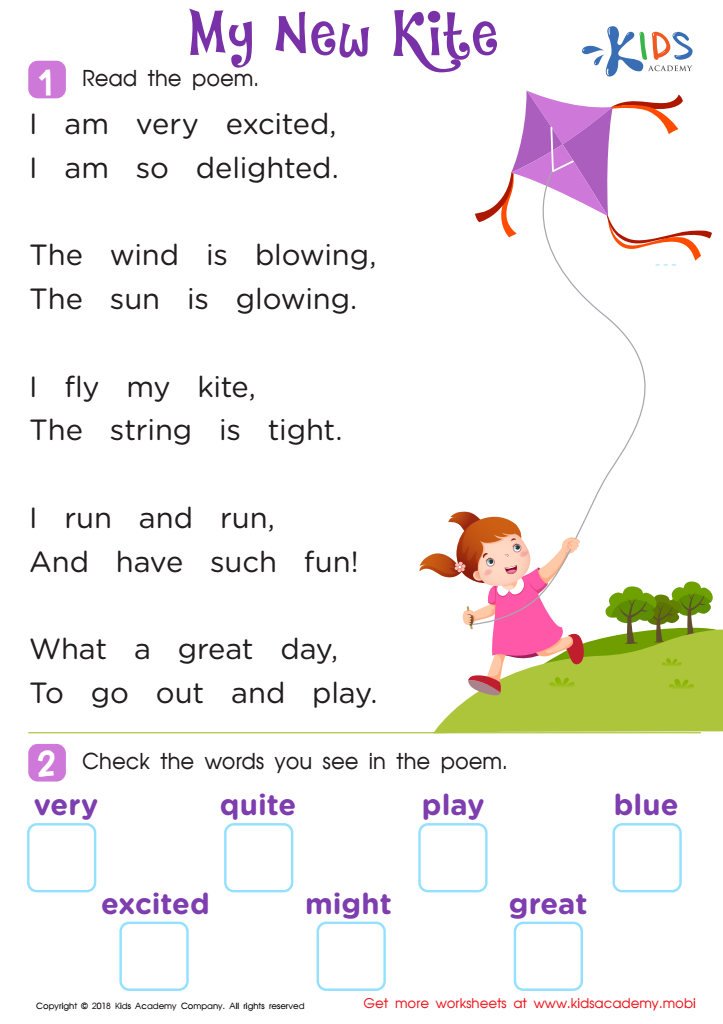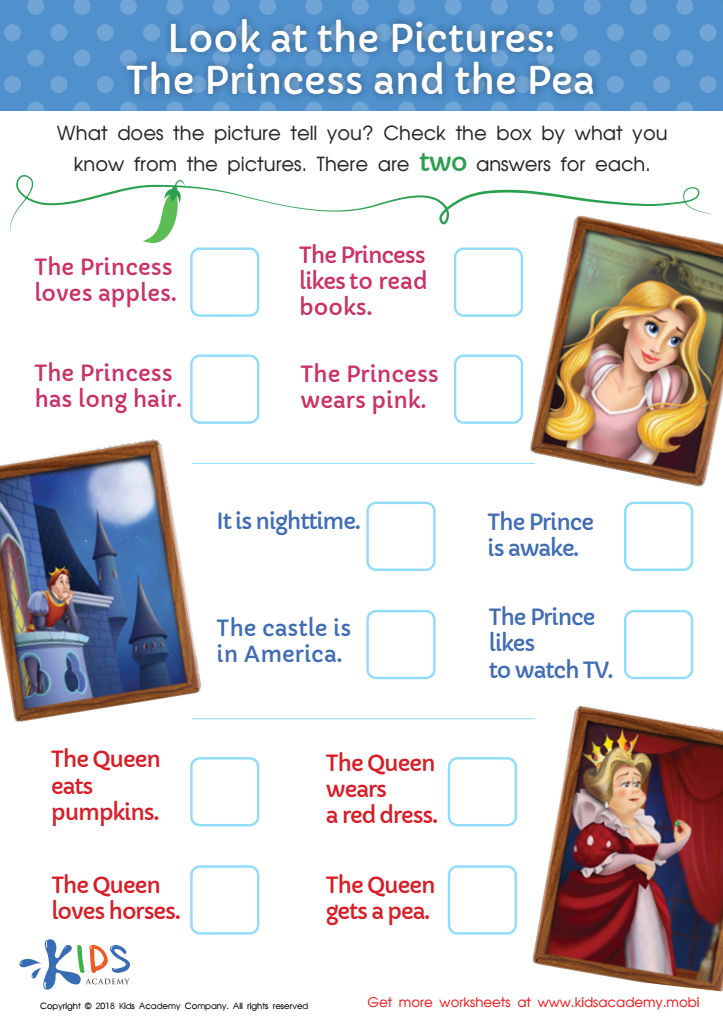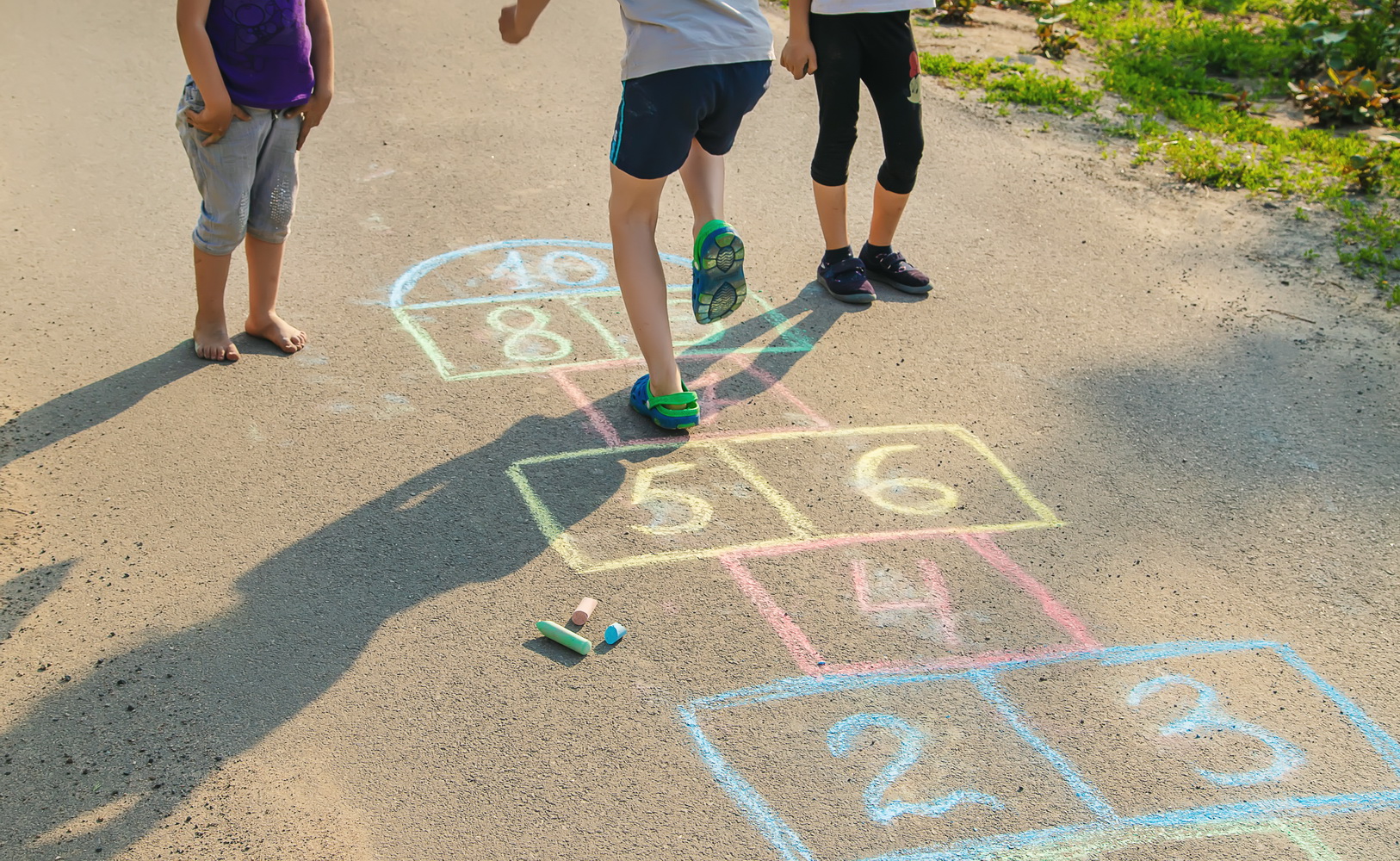Story sequencing Normal Reading Comprehension Worksheets for Ages 4-7
14 filtered results
-
From - To
Enhance your child's reading skills with our Story Sequencing Normal Reading Comprehension Worksheets designed for ages 4-7. These worksheets foster critical-thinking and narrative understanding by having children identify the beginning, middle, and end of a story. By rearranging story elements into the correct sequence, young learners improve comprehension, logical thinking, and memory. Our engaging worksheets feature captivating illustrations and age-appropriate texts that make learning enjoyable. Perfect for parents and teachers, these resources support early literacy development and confidence in reading. Help your child master story sequencing and build a strong foundation for future reading success today!


“The Princess and the Pea” and “Cinderella” Worksheet


Poem: My New Kite Worksheet


Sequence: Jack and The Beanstalk Worksheet


Cinderella Story Sequencing Worksheet


Sequencing: The Tortoise and the Hare Worksheet


Jack and Beanstalk Worksheet


Picture in Books Worksheet


Little Red Riding Hood Printable


Cinderella: Beginning, Middle and End Worksheet


Puss in Boots Illustrations Worksheet


Three Little Pigs Questions Worksheet


The Boy Who Cried Wolf Worksheet


Look at the Pictures: The Princess and the Pea Worksheet


Princess and the Pea Questions Worksheet
Story sequencing and normal reading comprehension are fundamental skills that play significant roles in a child's cognitive and social development. For children ages 4-7, grasping story sequencing helps them understand the logical order of events, which is crucial not only for reading comprehension but also for everyday decision-making and problem-solving. When children can sequence a story, they learn to recognize patterns and predict outcomes, enhancing their ability to make sense of the world around them.
Comprehending the structure of a story also aids in the development of critical thinking skills. As children learn to identify the beginning, middle, and end of a story, they become adept at understanding relationships and causality between different events. This understanding helps improve their vocabulary, language skills, and even mathematical reasoning, as sequencing is a foundational concept in both literacy and numeracy.
Moreover, discussing stories and their sequences with parents or teachers fosters important social interactions. These discussions can build a child's communication skills, bolster their confidence, and strengthen emotional bonds. A child who masters story sequencing is less likely to experience frustration and more likely to enjoy reading, fostering a lifelong love for literature. Therefore, nurturing these skills at a young age is essential for holistic development and future academic success.
 Assign to My Students
Assign to My Students





















